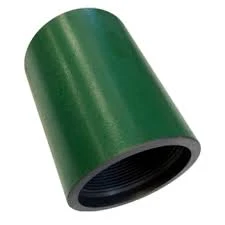- Afrikaans
- Albanian
- Amharic
- Arabic
- Armenian
- Azerbaijani
- Basque
- Belarusian
- Bengali
- Bosnian
- Bulgarian
- Catalan
- Cebuano
- Corsican
- Croatian
- Czech
- Danish
- Dutch
- English
- Esperanto
- Estonian
- Finnish
- French
- Frisian
- Galician
- Georgian
- German
- Greek
- Gujarati
- Haitian Creole
- hausa
- hawaiian
- Hebrew
- Hindi
- Miao
- Hungarian
- Icelandic
- igbo
- Indonesian
- irish
- Italian
- Japanese
- Javanese
- Kannada
- kazakh
- Khmer
- Rwandese
- Korean
- Kurdish
- Kyrgyz
- Lao
- Latin
- Latvian
- Lithuanian
- Luxembourgish
- Macedonian
- Malgashi
- Malay
- Malayalam
- Maltese
- Maori
- Marathi
- Mongolian
- Myanmar
- Nepali
- Norwegian
- Norwegian
- Occitan
- Pashto
- Persian
- Polish
- Portuguese
- Punjabi
- Romanian
- Russian
- Samoan
- Scottish Gaelic
- Serbian
- Sesotho
- Shona
- Sindhi
- Sinhala
- Slovak
- Slovenian
- Somali
- Spanish
- Sundanese
- Swahili
- Swedish
- Tagalog
- Tajik
- Tamil
- Tatar
- Telugu
- Thai
- Turkish
- Turkmen
- Ukrainian
- Urdu
- Uighur
- Uzbek
- Vietnamese
- Welsh
- Bantu
- Yiddish
- Yoruba
- Zulu
seating nipple in tubing
Understanding the Importance of Seating Nipple in Tubing
In the realm of oil and gas production, the functionality and integrity of tubing systems are paramount. One critical component of these systems is the seating nipple, which plays a vital role in ensuring that downhole equipment operates effectively. This article delves into the significance of seating nipples in tubing, highlighting their design, functions, and the factors affecting their performance.
A seating nipple is a specialized fitting installed in the production tubing string. Its primary purpose is to provide a mechanism for the reliable deployment and retrieval of downhole tools, such as plugs, packers, and various types of sensors. The design of a seating nipple allows these tools to be efficiently seated and sealed, ensuring that operations can proceed without complications arising from fluid bypass or equipment displacement.
Understanding the Importance of Seating Nipple in Tubing
There are multiple designs of seating nipples, including the standard and retrievable types, each suited for different applications and operational needs. Standard seating nipples are typically used for one-time operations, while retrievable nipples allow for the easy removal and reinstallation of downhole devices. This flexibility is crucial for operators, as it reduces the time and cost associated with workovers, allowing for a more agile response to changing conditions in the well.
seating nipple in tubing

To ensure optimal performance, several factors must be considered in the selection and installation of seating nipples. These include the tubing size, the thermal and pressure environment of the well, and the specific operational requirements. Additionally, the material composition of the seating nipple must withstand the aggressive conditions often found in downhole environments, such as corrosive fluids, high temperatures, and varying pressure conditions.
Regular maintenance and inspection of seating nipples are also critical to ensure their longevity and reliability. Over time, deposits, wear, and fatigue can affect the nipples' performance, leading to potential failure during critical operations. Operators must implement procedures for monitoring and assessing the condition of seating nipples, ensuring that they can be replaced or serviced before issues arise.
Furthermore, the installation of seating nipples must adhere to strict industry standards and practices. Proper installation techniques, including thread compatibility and sealing methods, are vital to prevent leaks and ensure the nipples perform as intended. Operators should also establish safety protocols to manage potential risks associated with downhole tool deployment and retrieval.
In conclusion, seating nipples in tubing play an essential role in the operation of oil and gas wells. Their design and functionality significantly impact the efficiency, safety, and effectiveness of downhole interventions. By understanding their importance, ensuring proper selection, maintenance, and installation, operators can enhance the performance of their well operations and contribute to overall production success. As technology advances, the design and materials used in seating nipples continue to evolve, promising even greater reliability and capability for future operations.
-
Tubing Pup Joints: Essential Components for Oil and Gas OperationsNewsJul.10,2025
-
Pup Joints: Essential Components for Reliable Drilling OperationsNewsJul.10,2025
-
Pipe Couplings: Connecting Your World EfficientlyNewsJul.10,2025
-
Mastering Oilfield Operations with Quality Tubing and CasingNewsJul.10,2025
-
High-Quality Casing Couplings for Every NeedNewsJul.10,2025
-
Boost Your Drilling Efficiency with Premium Crossover Tools & Seating NipplesNewsJul.10,2025







